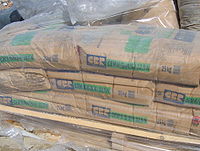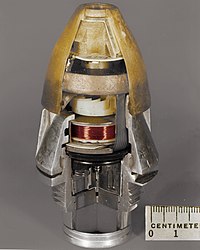
Mechanical and durability properties of insulation mortar with rubber powder from waste tires
Sign Up to like & getrecommendations! Published in 2017 at "Journal of Material Cycles and Waste Management"
DOI: 10.1007/s10163-016-0475-2
Abstract: Fine rubber particles from scrap tires can be used as an insulation material by incorporating with Portland cement mortar. In addition to thermal properties, there are special mechanical and durability properties that are important for… read more here.
Keywords: insulation mortar; strength; rubber powder; mortar ... See more keywords

Formulation of mortars based on thermally treated sediments
Sign Up to like & getrecommendations! Published in 2018 at "Journal of Material Cycles and Waste Management"
DOI: 10.1007/s10163-017-0626-0
Abstract: To successfully transition any economy towards sustainable development requires reducing the consumption of raw materials while maintaining production levels. In the French construction sector, nearly 55% of extracted materials are aggregates. A potential solution to… read more here.
Keywords: treated sediments; formulation mortars; mortars based; thermally treated ... See more keywords

Cement degree of hydration in mortar and concrete
Sign Up to like & getrecommendations! Published in 2019 at "Journal of Thermal Analysis and Calorimetry"
DOI: 10.1007/s10973-019-08800-w
Abstract: Properties of concrete depend on the cement degree of hydration. Standard test methods proposed for quantifying cement degree of hydration employ thermogravimetric (TG) analysis which can be problematic when aggregates are added. This study aims… read more here.
Keywords: cement degree; hydration; mortar; degree hydration ... See more keywords

Evaluation of rubberized fibre mortar exposed to elevated temperature using destructive and non-destructive testing
Sign Up to like & getrecommendations! Published in 2017 at "KSCE Journal of Civil Engineering"
DOI: 10.1007/s12205-016-0721-0
Abstract: The mechanical properties of concrete containing crumb rubber (CR) as a replacement for fine aggregate have been studied by many researchers. The consequence of these studies indicates that when CR is used as a substitute… read more here.
Keywords: destructive testing; non destructive; evaluation; compressive strength ... See more keywords

Filler effect of pozzolanic materials on the strength and microstructure development of mortar
Sign Up to like & getrecommendations! Published in 2017 at "KSCE Journal of Civil Engineering"
DOI: 10.1007/s12205-016-0737-5
Abstract: The utilization of pozzolans in cementitious system (concrete and mortar) minimizes both cost and energy. It also enhances mechanical strength and durability of the system. The total contribution of pozzolans can be categorized into two:… read more here.
Keywords: strength; effect; mortar; development ... See more keywords

Mathematical model relating dynamic dewatering process of fresh mortar and its composition
Sign Up to like & getrecommendations! Published in 2018 at "KSCE Journal of Civil Engineering"
DOI: 10.1007/s12205-017-2010-y
Abstract: The composition and properties of raw materials have significant influences on water retention capacity of mortar, but the basic origin remains unclear. To clarify the movement of water inside mortar and the mechanism of water… read more here.
Keywords: dynamic dewatering; water; model; mortar ... See more keywords

Effects of Silica Fume on Workability and Compressive Strength Properties of Aluminosilicate Based Flowable Geopolymer Mortar under Ambient Curing
Sign Up to like & getrecommendations! Published in 2019 at "Silicon"
DOI: 10.1007/s12633-019-00308-0
Abstract: In this study, the effects of silica fume on setting time, mortar flow and compressive strength properties of fly ash based flowable geopolymer mortar had been studied. The aluminosilicate binder of 70% fly ash and… read more here.
Keywords: silica fume; strength properties; compressive strength; mortar ... See more keywords

Optimization of Mixing Parameters in Nanosilica Toughened Cement Mortar Using Taguchi-Grey Relational Analysis
Sign Up to like & getrecommendations! Published in 2020 at "Silicon"
DOI: 10.1007/s12633-020-00791-w
Abstract: In this research, multi response Taguchi-grey relational approach was employed to optimize the mixing parameters in cement mortar preparation. The main aim of this present investigation is to find the optimal input variables like surface-modified… read more here.
Keywords: taguchi grey; water; cement mortar; mortar ... See more keywords

Utilisation of Electrodialytically Treated Sewage Sludge Ash in Mortar
Sign Up to like & getrecommendations! Published in 2018 at "Waste and Biomass Valorization"
DOI: 10.1007/s12649-018-0215-z
Abstract: Phosphorous is a scarce resource and there is a need to develop methods for recovery of this irreplaceable nutrient from secondary resources, e.g. from sewage sludge ash (SSA). Today SSA is most often disposed of… read more here.
Keywords: ssa; sewage sludge; mortar; sludge ash ... See more keywords

Detection of mortar defects in ballastless tracks of high-speed railway using transient elastic wave method
Sign Up to like & getrecommendations! Published in 2018 at "Journal of Civil Structural Health Monitoring"
DOI: 10.1007/s13349-017-0265-0
Abstract: In the multi-layered track structure, the defects of cement-emulsified asphalt (CA) mortar are hidden and difficult to detect. There is still no effective detection method yet. Thus, this paper discusses the feasibility of mortar defect… read more here.
Keywords: detection; method; mortar; transient elastic ... See more keywords

Critical Grain Size of Fine Aggregates in the View of the Rheology of Mortar
Sign Up to like & getrecommendations! Published in 2017 at "International Journal of Concrete Structures and Materials"
DOI: 10.1007/s40069-017-0217-4
Abstract: The aim of this research was to investigate the validity of the Krieger–Dougherty model as a quantitative model to predict the viscosity of mortar depending on various aggregate sizes. The Krieger–Dougherty model reportedly predicted the… read more here.
Keywords: viscosity; rheology; fine aggregates; mortar ... See more keywords